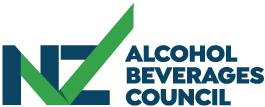Recent data from Stats NZ [1] highlights record low levels of alcohol consumption. Additionally, the Organisation for Economic Co-operation and Development (OECD) reports that Kiwis drink below the OECD average.
“Kiwis are drinking our beer, wine and spirits differently with many choosing higher value beverages and are drinking less”, said NZABC executive director Virginia Nicholls.
According to Stats NZ our beer, wine and spirits consumption per head of population [2] has declined by 12% over the past year.
Our total beer, wine and spirits consumption is 465 litres [3], with Beer declining in the past year by 5% to 280 million litres, spirits by 14% to 90 million litres and wine has declined by 6.4% to 95.4 million litres.
The total amount of beer, wine and spirits available for sale is now lower than 2016 despite the NZ population [4] growing 11% to 5.3 million people over the same time period.
According to the Southern Cross Healthy Futures survey media release [5] “Alcohol consumption patterns continued to shift, with more New Zealanders saying that low or no alcohol was the way to go. A quarter of New Zealanders reduced their alcohol consumption in the last six months to look after their health and wellbeing”.
“We are sipping and savouring our beverages and are consuming different products including the continued rise in no and low alcohol products”.
A poll of 1,000 New Zealanders in December 2023 [6] found 55% (up from 49% in 2021) of respondents drinking low-alcohol beverages at least some of the time, and some of us prefer low alcohol beverages.
When we compare our drinking with other countries in the OECD [7] Kiwis are drinking less than the OECD average. This includes less than the US, UK, Australia, Germany, France and Ireland.
“This dispels the belief held by some Kiwis that we drink more than other OECD countries.”
The NZ annual Health Survey [8] tells us that more of us are drinking in a more responsible way with 84% of New Zealand adults – more than four out of five of us – drinking beer, wine and spirits responsibly. This is an increase of 3 percentage points from last year which is 110,000 fewer kiwis drinking in a harmful way [9].
The proportion of people who have consumed alcohol in the past twelve months has decreased 2.1 percentage points, with 76.3% of the population [10], an estimated 3,205,000 having consumed alcohol (79.1% 2022).
“These findings reflect a broader trend towards an increase in responsible drinking, less hazardous drinking and suggest a growing focus on healthier lifestyle choices”.
References:
[1] Stats NZ, Alcohol available for consumption year end June 2023 (8.742) and June 2024 (litres of alcohol per head of population), accessed 26 August 24: Browse – Infoshare – Statistics New Zealand (stats.govt.nz)
[2] Total NZ population 15 years and over alcohol available for consumption (per head of population). Year end 1986 (10.867 litres), June 2024 (7.666 litres). Browse – Infoshare – Statistics New Zealand (stats.govt.nz)
[3] Stats NZ, Alcohol available for consumption year end June 2024 (litres of beverage) Browse – Infoshare – Statistics New Zealand (stats.govt.nz)
[4] Stats NZ population 4.7 million people June 2016 and 5.3 million June 2024 : Population | Stats NZ, accessed 26 August 24
[5] Southern Cross Healthy Futures Report 2024 (28 August 24): shining a light on New Zealanders’ health and wellbeing. Biennial report by Kantar. They have spoken with more than 7,000 New Zealanders over the past five years since the inaugural Healthy Futures report in 2020. During this time, they have been able to track how health and wellbeing attitudes and behaviours have changed over time and share what’s top of mind for New Zealanders today. PowerPoint Presentation (mc-fec8b19f-c7fd-4e56-8bfe-1850-cdn-endpoint.azureedge.net), accessed media release 28 August 24.
[6] Curia Market Research, 1000 participants, December 2023
[7] International comparison: OECD data
Reference: OECD (2023), Alcohol consumption (indicator), litres per person
OECD data explorer: OECD Data Explorer • Alcohol consumption, accessed August 2024
Alcohol consumption is defined as annual sales of pure alcohol in litres per person aged 15 years and older.
The methodology to convert alcohol drinks to pure alcohol may differ across countries. Official data do not adjust for tourist consumption and unrecorded alcohol consumption, such as domestic or illegal production, with some exceptions. While national data on overall consumption per capita facilitate the assessment of long-term trends, they do not identify harmful drinking patterns, such as heavy episodic drinking.
This indicator is measured in litres per capita; people aged 15 years and older.
Source: Health risks – Alcohol consumption – OECD Data
| Alcohol consumption litres per person OECD | 2019 | 2020 | 2021 | 2022 | 2023 |
| Canada | 8.0 | 8.1 | 8.3 | 8.1 | |
| New Zealand | 8.8 | 8.7 | 8.8 | 8.7 | 8.2 |
| United States | 9 | 9.2 | 9.5 | ||
| UK | 9.7 | 9.7 | 10 | 9.9 | |
| Australia | 10.1 | ||||
| Germany | 10.6 | ||||
| France | 11.4 | 10.4 | 10.6 | 10.8 | |
| Ireland | 10.8 | 10.1 | 9.5 | 10.2 | 9.9 |
[8] Latest New Zealand Health Survey results provide valuable information about the health and wellbeing of New Zealanders | Ministry of Health NZ, accessed 14 December 2023
[9] Ibid. This is an estimated 670,000 adults (22/23) and 780,000 adults (21/22).
[10] Ibid
